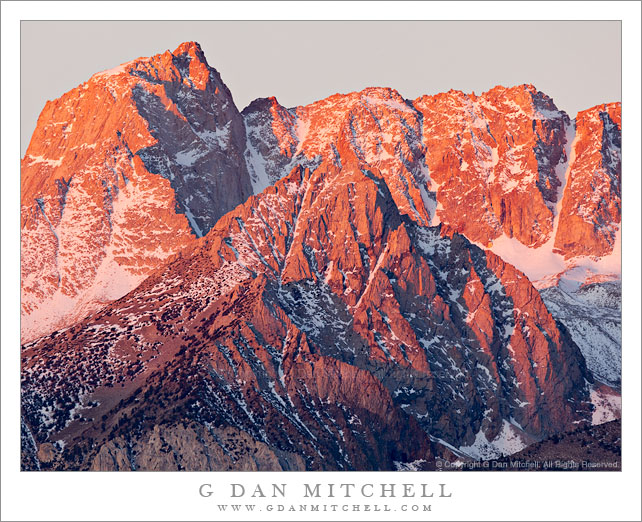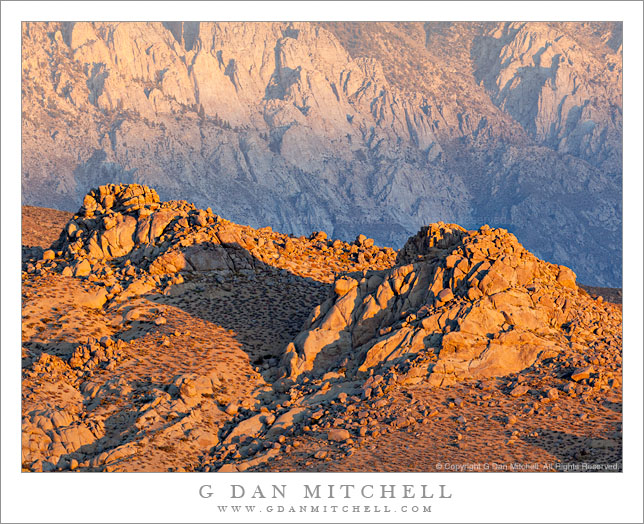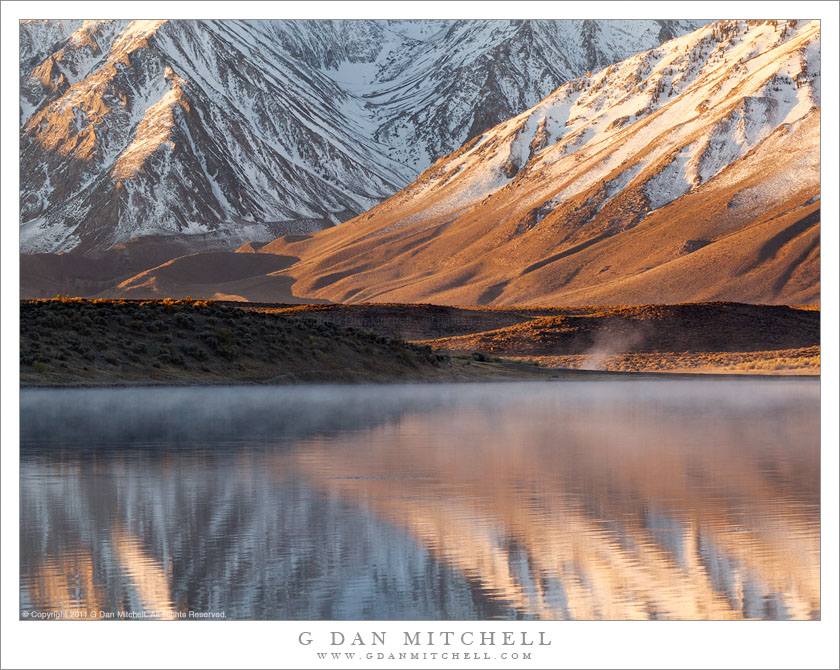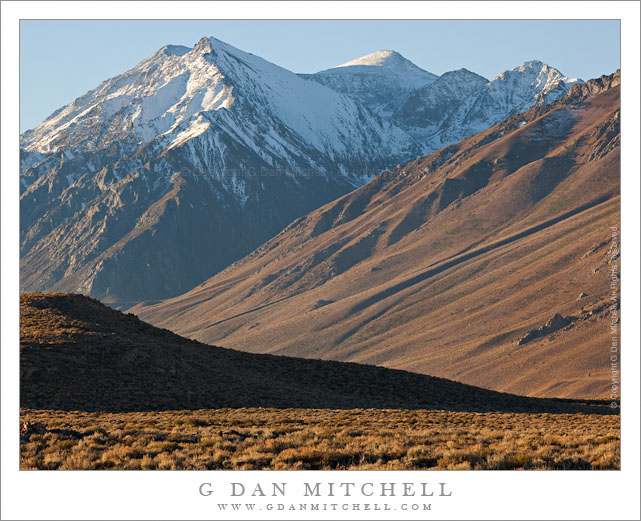Mount Humphreys and the Sierra Crest, Dawn. Near Bishop, California. October 15, 2011. © Copyright 2011 G Dan Mitchell – all rights reserved.
Dawn light falls on the snow-dusted summit of Mount Humphreys and the Sierra Crest above Bishop, California.
On this morning I paused along highway 168 on my way to photograph fall aspen color in the Bishop Creek Canyon area to photograph the first light on the Buttermilk Range and along the section of the Sierra crest near Mt. Humphreys and Center Peak. My main reason for stopping here was to photograph the Buttermilks, the rocky hills along the giant “fan” rising from Bishop toward the base of the escarpment of the eastern Sierra. The plan was to find a good vantage point, put a long lens on the camera, and then pick out various features of the range as the edge of the first light hit them.
With that in mind, I was set up here before dawn and standing around in the cold morning air waiting for the light to arrive. Obviously, before the dawn light can get down to the elevation of the Buttermilks it must first hit the peaks of the crest, and who can resist that kind of light? The very first light that just touched the tip of Mount Humphreys, near the right side of the frame, was almost too intense in comparison to the shadowed lower slopes, so I continued to wait until the light, still very saturated with color, illuminated the full upper faces of the crest and began to light up the lower peaks to the east.
G Dan Mitchell is a California photographer whose subjects include the Pacific coast, redwood forests, central California oak/grasslands, the Sierra Nevada, California deserts, urban landscapes, night photography, and more.
Blog | About | Flickr | Twitter | Facebook | Google+ | 500px.com | LinkedIn | Email
Text, photographs, and other media are © Copyright G Dan Mitchell (or others when indicated) and are not in the public domain and may not be used on websites, blogs, or in other media without advance permission from G Dan Mitchell.




